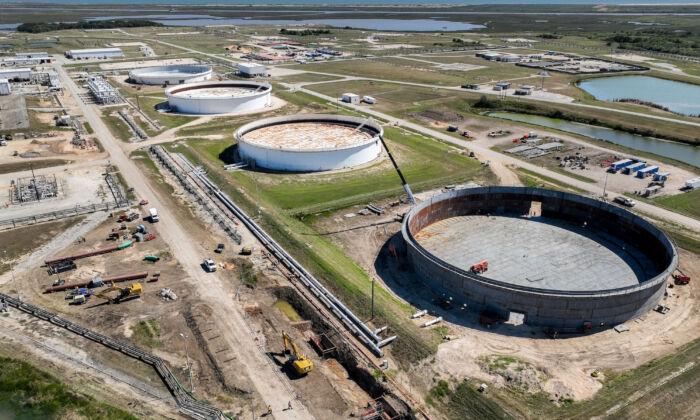News Analysis
After the Biden administration released 180 million barrels of oil last year from its Strategic Petroleum Reserve (SPR) in an attempt to rein in gasoline prices, Washington is now facing a dilemma while trying to replenish the SPR as it deals with price and funding challenges.
The release of 180 million barrels of oil last year at roughly $96 per barrel generated $17.3 billion in proceeds for the Department of Energy (DoE), according to an
analysis by The Wall Street Journal. However, the department does not have these funds to use to replenish the SPR. Out of the $17.3 billion, $12.5 billion was stripped away to be used in the recent spending bill. This leaves the department with around $4.8 billion.
To complicate matters, the full drawdown of the SPR last year was not 180 million barrels but 221.7 million barrels according to
data from the DoE. As of Dec. 30, there were roughly 372.4 million barrels of oil in the SPR, which is the lowest level in 39 years.
The agency had earlier indicated that it intends to make oil purchases only when WTI crude prices are at or below the $67 to $72 per barrel level.
Even if the DOE is able to buy WTI oil at $70 per barrel, the $4.8 billion will only procure 70 million barrels, which is 110 million barrels fewer than the 180 million barrels released in 2022. Adding 70 million barrels will only take the SPR to 440 million barrels, an amount it had back in 1984.
Resupplying SPR
Last month, the DoE said that it intends to buy up to three million barrels of oil for delivery to the SPR in February. However, the department has decided to reject the bids for such supplies.“Following review of the initial submission, DOE will not be making any award selections for the February delivery window,” an agency spokesperson
said in a statement to Reuters.
“DOE will only select bids that meet the required crude specifications and that are at a price that is a good deal for taxpayers.”
WTI is trading at $78 per barrel as of 10:27 a.m. ET on Jan. 12. If prices manage to fall below the $72 level which would trigger DoE purchase intent, the fact that the department is buying WTI crude would push prices higher.
WTI oil prices were trading below $70 per barrel only from contracts beginning in October 2024 as of Jan. 9, which is roughly 20 months away. To attract more bids for SPR resupply in near-term contracts, the DoE will have to offer a higher purchase price.
SPR and China
Meanwhile, Rep. Cathy McMorris Rodgers (R-Wash.) has introduced the “H.R. 22” bill aimed at preventing the misuse of SPR for China’s benefit.The
bill “prohibits the Department of Energy (DOE) from selling petroleum products (e.g., crude oil) from the SPR to any entity that is under the ownership, control, or influence of the Chinese Communist Party. Further, DOE must require as a condition of any sale of crude oil from the SPR that the oil not be exported to China.”
In a Jan. 12
post on Twitter, Rodgers pointed out that the bill will stop the Biden administration from “draining” America’s strategic petroleum reserves and selling oil to China—a country that now has the “world’s largest government-controlled stockpile” of oil.
Some of the SPR emergency sales from last year had gone to China-owned companies like Unipec America which is wholly owned by Chinese state-run oil firm Sinopec.





